#but John had all that money and not a single cent went to a therapist so he could sort out his issues
Explore tagged Tumblr posts
Text
John Seed is a comfort character for some people. Folks like to ship him with their deputies or craft redemption arcs for him.
There's nothing wrong with that, obviously.
But I just can't wrap my head around it.
There's nothing comforting about the way John Seed treated Joey Hudson. I don't understand why the ordeal she went through doesn't seem to matter to fans of his.
She was bait for the rookie deputy and nothing more, because she wasn't going to give in and join the cult.
He terrorized Joey and the rest of Fall's End, stooping to the lowest, most inhumane levels to get his way. Some even theorize that he hurt the "sinners" in his care just because he wanted to, for malicious, sadistic reasons that didn't have anything to do with the cult. At worst, some people go as far as to speculate that he raped Joey.
It's easy to see why someone might come to that conclusion. The way he acts is deplorable and he makes everything feel extremely personal, sometimes in ways that can be interpreted as sexually charged. He'll do anything in order to get his way because "no" is antithetical to him. He regularly flies off the handle, so much so that Joseph is threatening to cast him out. All the touching and getting right up in the player's face is so uncomfortable and obsessive (which is the point, but I digress).
So why does he get to be redeemed and venerated by fans? Don't his actions warrant consequences?
Are people willing to let him off the hook because he's attractive? Because he had a horrible, abusive childhood? Obviously he's got a lot more lore than most of the cast. Is that something people are interested in exploring for him over other characters?
I'm not trying to come after anyone personally. There's nothing wrong with liking villains and Jacob, Faith, and Joseph have also done terrible things to innocent people.
Which is like, fine. It's a video game.
And I know that John, like Joey, is a victim of Ubisoft's choppy, inconsistent writing and storytelling. Things got changed and swapped and cut during development that got us to where we are, with the story we have. Flaws and all, not like it was ever going to be perfect.
But in my opinion, I feel like the adoration for John does a huge disservice to Joey. People make thirsty edits of him while she's literally tied up behind him. It's tasteless and makes the optics of her situation look even creepier.
Her pain has largely been ignored for as long as the game has existed. I can't for the life of me figure out why.
#i'm gonna save my extra personal interpretations for the notes#genuinely I'm not trying to come after anyone#I just can't wrap my head around it#same goes for Jacob but I feel like he at least has the capacity for some change#cause he has doubts about the cult and stuff#the jury is out on Faith and how much autonomy she really has#though I believe it's more than some people think#and Joseph well... some medication is in order at least#but John had all that money and not a single cent went to a therapist so he could sort out his issues#John never got proper help and he has some very fucked up interpretations of the events that happened to him#he is so stuck in his ways and regularly acts extremely selfishly#in canon that's even considered to be part of why he dies#he's too stubborn and selfish to change#would rather everyone experience the pain that he felt than accept what happened to him#he absolutely had the means to better himself and never did#and Joey and all the other innocent people in his bunker were hurt no matter how you slice it#which if we're talking about John#I guess that's no pun intended#far cry 5#john seed#joey hudson#deputy hudson#fandom opinions#rape mention
38 notes
·
View notes
Text
Week 1.2
Inequality In New Zealand

Health Inequalities In New Zealand
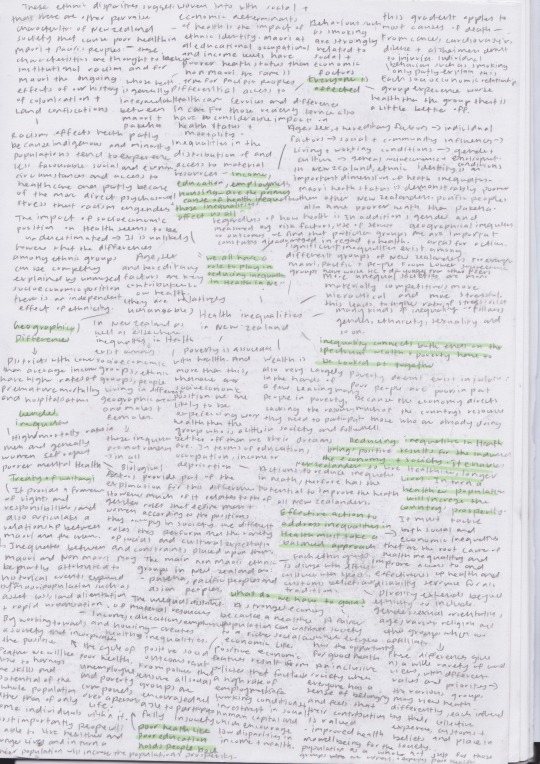
Social and Economic Determinants of Health
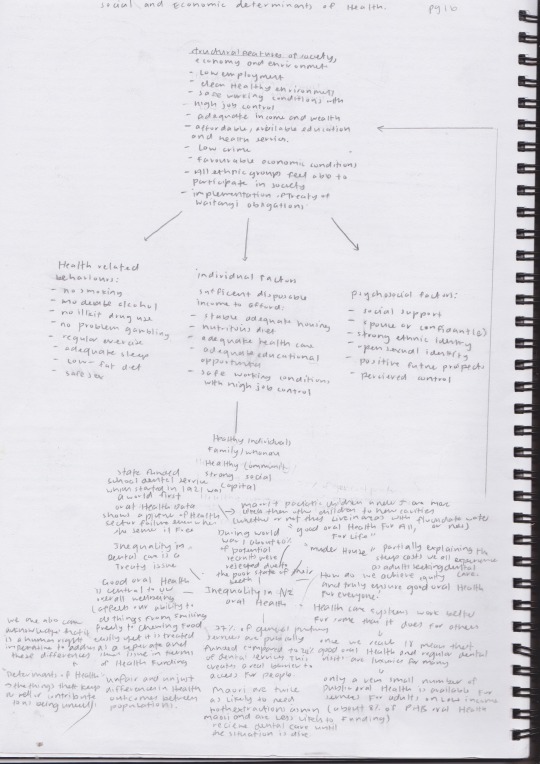
Oral Health Research
Jones, Nicholas. Time for Free Dental Care? The Huge Expense of Going to the Dentist | Health Central. 4 Mar. 2019, https://healthcentral.nz/time-for-free-dental-care-the-huge-expense-of-going-to-the-dentist/.
Desperate Kiwis are queuing at hospital pain clinics because they can’t afford the dentist - and health bosses are not backing free dental care.
“Waitemata District Health Board wants a “comprehensive dental service for all New Zealanders”, its chief executive confirmed
The position comes amidst growing concern among health workers about people who can’t afford hefty dentist’ bills and live in chronic pain as a result, with some resorting to gruesome “DIY dentistry”.
There are long queues at hospital pain clinics for temporary fillings for teeth extractions, people turning up at emergency departments because of dental pain.
Members discussed whether the health boards should call on the government to provide subsidised or free dentistry.
Waitemata DHB chief executive, Dr dale Bramley, told the meeting the Ministry of Health was “already considering how the dental service could be included in the public health service, and that the DHB boards should support”.
A resolution was passed by the committee recommending the DHBs “support comprehensive dental care access for all New Zealanders as part of the public health system”
Grant Pollard, the ministry’s group manager for population health, denied any current work on possible changes to publicly-funded dental care.
Any more to provide more subsidised or free dental care would carry a huge cost. Currently, about $198 million a year is spent on oral health services, with most covering universal services for children and teenagers.
Kiwis without enough money live in chronic pain that affects work, quality of life and mental and wider health
Gum disease increases the risk of heart disease, and poor oral health increases the chances of bacterial infection in the bloodstream
Adults must pay the full cost, and bills can run into thousands of dollars.
Hamilton dentist Dr Assil Russell launched a petition for subsidy for dental care for at-need people and an increase in the age for free dental care to 20 years.
Russell’s charity Receive a Smile has treated almost 10,000 patients free of charge, including those with bad infections, and broken and rotting teeth.
Currently, Government-funded dental work for adults is limited to emergency care for pain and infection relief, and work and income grants for those on a low income and who are in serious pain and need urgent treatment. Dental care is also given to a small number of hospital inpatient and work needed after accidents are funded by ACC.
The NZ Dental Association wants more subsidised care for people on low incomes - but not universal access saying such a step would likely cost more than the annual budget of large DHBs
Helen Clark tweeted Jacinda Ardern, Winston Peters and Social Development Minister Carmel Sepuloni: “Time for a major government initiative on the right to dental care. NZ makes hospital care free - why not a right to dental care?’
The cost of dental work:
Examination only: $76
Single tooth extraction $229
Each additional tooth taken: $138
Root Filling $735
One surface filling $153
Composi te crown $408
Hygienist - half hourly rate: $110
Full upper and lower dentures $2557 (the average fee charged by NZ Dental Association members, according to the association’s 2018 fee survey)
Broadbent, Jonathan. High Cost Means More than Half of NZ’s Young Adults Don’t Access Dental Care | Health Central. 30 May 2019, https://healthcentral.nz/high-cost-means-more-than-half-of-nzs-young-adults-dont-access-dental-care/.
In New Zealand wealth determines dental health
Inequalities in untreated tooth decay are wider in New Zealand than in Australia, Canada or the United States.
The latest NZ Health Survey run annually by the MOH reported that cost prevents an estimated 15 per cent of NZ adults (just over half million) from seeing a GP about a medical problem and nearly 7 per cent (around a quarter million) from filling a prescription. For dentistry, cost stopped 44 per cent of adults (around 1.6 million) from accessing care. In the young adult age group, this was over half the population.
Adult dental health care is a neglected health policy issue
The risk for dental problems is determined in early childhood and can be intergenerational
Those born into disadvantaged families go on to have greater rates of tooth decay as adults.
Young adulthood is when incomes are often at their lowest but untreated dental decay is at its highest
Conventional wisdom has it that the best approach to reducing inequalities is to educate the public but that doesn't work. To address social inequalities we need to address the underlying structural issues and ensure timely access to quality dental care
In dentistry inequalities in the delivery of dental care services are greater than inequalities in the disease itself.
The government spends around NZ$16 billion annually on health and spends around a quarter of a billion dollars a year on dental care.
NZ’s dental care system demonstrates why we can’t rely on market forces to equitably distribute population health services. The cost of introducing universal coverage for dental care would be high but doesn't mean the idea should not be considered or variation of it.
Prevention - it isn't just about brushing teeth and water fluoridation. NZ needs to increase spend on preventative dental care to save on the high cost of dental interventions.
Cardiovascular disease, diabetes and obesity have many of the same causes as dental disease. Stricter limits on the marketing and sale of sugary drinks and lollies, better regulation of “hidden sugars” and continued efforts for tobacco control would have benefits beyond dental health.
Dentistry is poorly integrated with other areas of health care. Neither is it funded like other areas of health care.
Dental surgery is expensive just like any other form of surgery. Accessible dental care can’t happen without funding.
First steps towards the goal that all New Zealanders are able to access affordable dental care should be population-level prevention and ensuring that disadvantaged groups can access emergency dental care.
Central, Health. Dental Therapists: We Can Help Improve Access to Dental Care. 28 Jan. 2019, https://healthcentral.nz/dental-therapists-we-can-help-improve-access-to-dental-care.
Dental therapists are keen to see access to dental care improved for low income and older New Zealanders
The Association says that countries like Australia are “miles ahead” in terms of utilising the extended skills of dental and oral health therapists.
“We as a profession are ready to train further and ensure the most vulnerable receive equitable access. There is no shortage of dental and oral health therapy graduates in New Zealand and if we are to retain these graduates in our country then they need to be provided with the opportunity to extend their respective scopes. It’s a win-win for the professions and for the country.”
Norris, Pauline. ‘Gaps in the System’. Otago Daily Times Online News, 11 May 2020, https://www.odt.co.nz/lifestyle/magazine/gaps-system
Gaps in the system
There are some who can't afford to smile
Dental care for adults, however, has never really been part of this system. Dental care is provided free to children.
the "murder house" where a woman in a starched uniform drilled and filled our teeth without anaesthetic
In the latest, NZ Health Survey around half of the people surveyed (53%) said they only went to the dentist for problems or did not go at all. Maori, Pacific people, those on low incomes and people with mental health problems often miss out on dental care. People in rural areas without dentists also struggle. Late last year I was in a rural healthcare centre a couple of hours north of Gisborne when a young woman with severe dental pain turned up. She had managed to get an appointment with a dentist in Gisborne but had no transport so couldn’t get to the appointment
In a recent paper in the Journal of the Royal Society of New Zealand, John Broughton and his colleagues wrote about the dental health of Maori with mental health problems. They interviewed 32 people and asked about their oral health and its impact on their lives, using a standard questionnaire that has been used in many studies. People reported that their oral health was causing them psychological and physical pain and disability and affecting their social interactions.
…. Not surprisingly, getting all this necessary dental work done had a big impact on participants. They experienced lower levels of pain, discomfort, and disability, and it is likely that the treatment led to increased mental as well as physical health.
The study makes clear that there is a very large burden of serious untreated dental problems in the community, and suggests that people with mental health problems should be a priority group for receiving dental care. The authors point out that Maori ways of thinking about health stress the connections between physical, mental, family and spiritual health. In this case, it is really clear that poor physical health, like not having many (or any) teeth, or having pain or infection from bad teeth, are likely to lead to other health and social problems.
Jones, Nicholas. Give All Kiwis ‘comprehensive and Affordable’ Dental Care: New Zealand Medical Association . 6 Mar. 2019, https://healthcentral.nz/give-all-kiwis-comprehensive-and-affordable-dental-care-new-zealand-medical-association/.
About one in three New Zealanders have untreated tooth decay, the last comprehensive oral health survey in 2009 found. Almost half of adults had avoided routine dental treatment in the previous year, because of cost.
All New Zealanders should have access to a “comprehensive and affordable” dental service, the New Zealand Medical Association says.
“comprehensive dental service for all New Zealanders”
Association chairwoman Dr Kate Baddock said dental decay “remains the most prevalent chronic, yet reversible disease in New Zealand”.
Māori and Pasifika have worse oral health outcomes as well as those living in areas of higher socioeconomic deprivation – this is an equity issue that must be addressed
Baddock said bold action was needed to prevent dental problems, including fluoridation of drinking water, and cutting down on sugar in food and drink.
Any move to provide more subsidised or free dental care would carry a huge cost. Currently, about $198 million a year is spent on oral health services, with most covering universal services for children and teenagers.
Adults must pay the full cost, and bills can run into thousands of dollars.
Kiwis without enough money live in chronic pain that affects work, quality of life, and mental and wider health. Gum disease increases the risk of heart disease, and poor oral health increases the chances of bacterial infection in the bloodstream.
Slater, Caitlin. ‘Memories of Dental Nurses and the “Murder House”’. Stuff, 15 Feb. 2016, https://www.stuff.co.nz/national/health/76918041/memories-of-dental-nurses-and-the-murder-house.
During World War, I about 40 per cent of potential recruits were rejected because the poor state of their teeth meant they were not fit to serve.
Baker, Gabrielle. ‘Inequality in Dental Care Is a Treaty Issue’. The Spinoff, 7 Oct. 2019, https://thespinoff.co.nz/science/07-10-2019/inequality-in-dental-care-is-a-treaty-issue/.
once we turn 18 means that good oral health and regular dental visits are luxuries for many, requiring bravery and serious coin.
Oral health data also shows a picture of health sector failure, even when the service is “free”. For example, Māori and Pacific children under five are more likely than other children to have cavities (whether or not they live in areas with fluoridated water supply)
“Māori as Tiriti/Treaty partners have not been well served by the health and disability system. During the symposium oral health was described as a Cinderella policy area, in reference to it receiving less attention than it should from policymakers last national oral health policy, Good Oral Health For All, For Life, was released in 2006 and only one of the seven priority actions have been achieved. Meanwhile, the inequities in access to oral health services and in good oral health outcomes remain and there doesn’t appear to be any consequences (for the Ministry, DHBs or providers) for the lack of equitable progress.
Good oral health is central to our overall wellbeing (affecting our ability to do everything from smiling freely to chewing food easily) yet it is treated as a separate and siloed issue in terms of health funding. 77 per cent of general practice services are publicly funded compared to 24 per cent of dental services. This creates a very real barrier to access for people, partially explaining the steep costs we all experience as adults seeking dental care
Martin, Hannah. ‘“Appalling” Child Tooth Decay Rates in Northland and Auckland’. Stuff, 11 Apr. 2019, https://www.stuff.co.nz/national/health/111956057/appalling-child-tooth-decay-rates-in-northland-and-auckland.
Two-fifths of pre-schoolers in Northland and Auckland have tooth decay
But along the way, they found 40 per cent of the children had one or more decayed, missing or filled tooth surface in their primary (baby or milk) teeth
Aung and Tin-Tin said the "significant" and "surprising" association between tooth decay and injury admissions may be due to "common factors" relating to wider issues of social inequities – being from lower socioeconomic status, poor physical environments and large families
he data showed non-European children and those living in Northland – in more deprived areas or those without water fluoridation – had higher rates of tooth decay.
Of those surveyed, more than 64 per cent of Pacific and 59 per cent of Māori children had tooth decay.
It was "appalling" to see that two in five pre-school children had caries, Tin Tin told Stuff.
"This underscores the need for urgent public health actions to improve oral health and reduce inequalities in pre-school children," she said.
Rates of tooth decay in New Zealand far exceed rates overseas
Northland's lack of fluoridation in its water supply and New Zealand's "minimal" regulation around the availability and promotion of sugary foods and drinks also played a role, they said.
President of the New Zealand Dental Association, Bill O'Connor said Northland and Auckland's dental services were "overwhelmed".
The findings reinforced the association's position particularly around the role sugary drinks and water fluoridation played in oral health, he said
Both Northland and Auckland were experiencing shortages of oral health therapists, amid "huge demand"
Revive A Smile (nzdentalcharity.org)
Revive A Smile is a New Zealand based dental charity established in 2011 by Dr Assil Russeull and run by a team of dental health professionals from all over Aotearoa.
Revive a Smile aims to reduce oral health disparities experienced by disadvantaged and impoverished Kiwis.
The project works by providing much needed free dental treatment education and oral health products (such as health packs, including toothbrushes, floss and mouth wash.
Revive a Smile provides dental care and various members and groups of the community including homeless persons, victims of domestic violence, refugee migrants, low-income adults and the elderly. It aims to empower kiwis to take control of their oral health by treating toothache and developing personal skills, enabling people to become, healthy, contributing members of society.
Founded on Dr Russell’s philosophy that “caring creates change”
Revive a smile is a dental charity that is purely about caring indiscriminately without conditions.
Revive A Smile runs charity mobiles dental clinics and partner practices throughout New Zealand.
Are Supported by Southern Cross. Random Input: Word In Class
Words given: Chicken, Wave and Bus
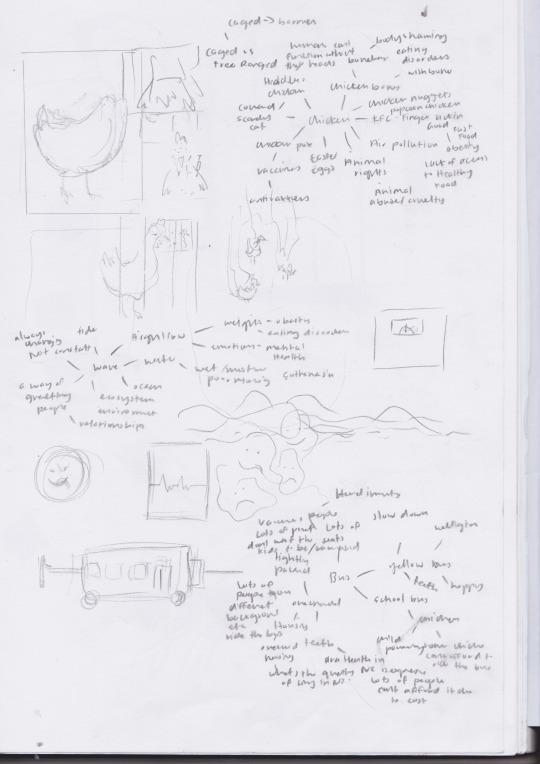
Daily Exercise: Random Input - Word and in response to reading: Hayden, Leonie. ‘Why Diversity Matters (and No One Should Need to Write This Headline in 2020)’. The Spinoff, 18 July 2020, https://thespinoff.co.nz/atea/18-07-2020/why-diversity-matters-no-one-should-need-to-write-this-headline-in-2020/.
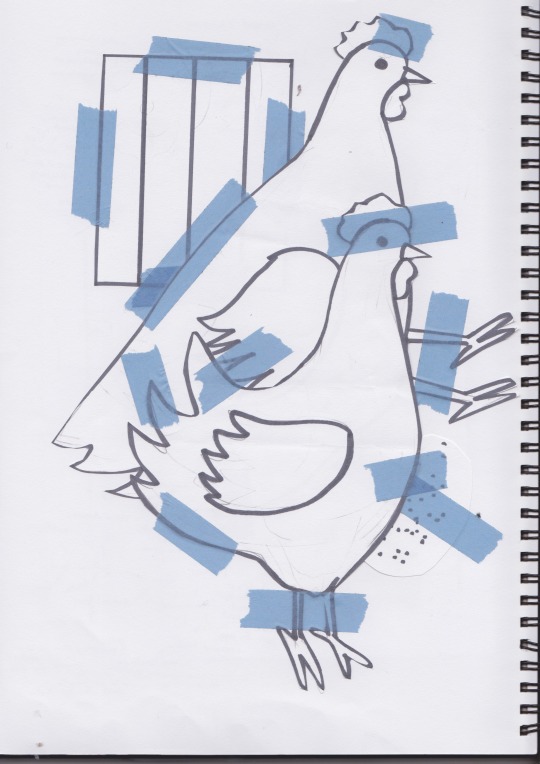
For today’s poster I used the word I got from class: chicken for my poster. I wanted to try hand drawing it as opposed to doing it digitally as I really enjoyed it from Monday’s class the quick sketching of ideas. I played cut the pictures out then played around trying out different compositions before scanning it and editing it in photoshop. After doing the reading through my poster I wanted to show the key idea of “perspective being an asset”. In my poster I show two chicken one that is white the other that is of colour, the white chicken is able is free ranged and lives a life outside of a cage and is able to receive food. In comparison the chicken who is coloured is a chicken that is caged can only watch as the other eats.
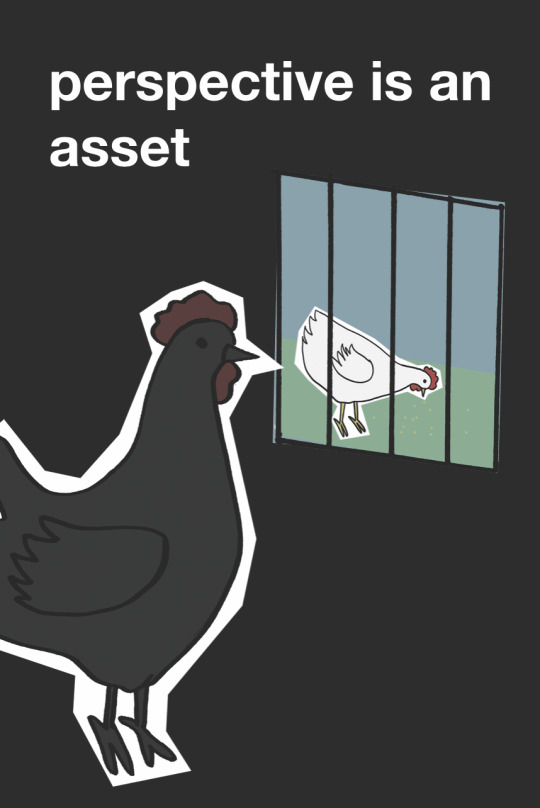
Word List
Inequality
Bias
Difference
Discrimination
Disparity
Injustice
Unfairness
Contrast
Variation
Dentist
Tooth fairy
Murder house
Mad house
Murder
Assassination
Bloodshed
Crime
Destruction
Massacre
Butchery
Carnage
Teeth
Fang
Incisor
Molar
Premolar
Snag
Canine
Dent
Grind
Grinder
Mouth
Box
Cavity
Door
Entrance
Gate
Beak
Chops
Clam
Crevice
Funnel
Gob
Jaws
Trap
Portal
Bone
Cartilage
Abrasion
Plaque
Oral
Fracture
Extraction
Excision
Erosion
Dry mouth
Decay
Cusp
Crown - artificial
Cementum
Composite
Bicuspid
Waves of emotions
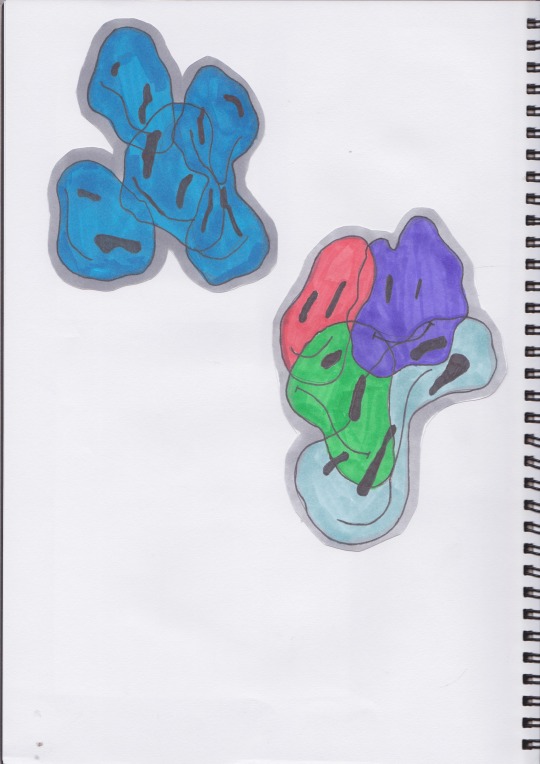
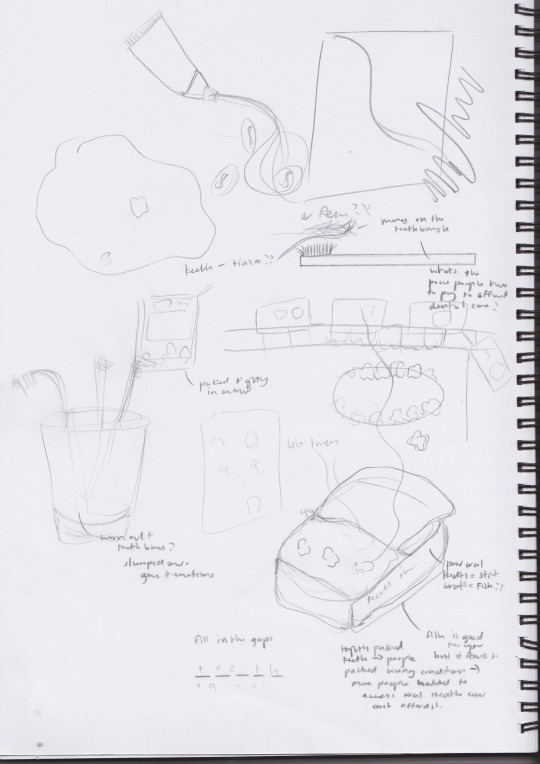

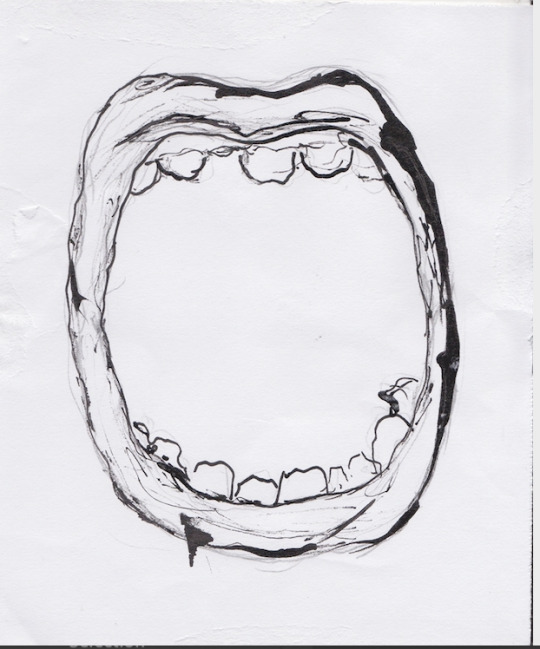
0 notes
Link
In the summer season of 1973, Conrad Romo, a 19-year-old kid from L.A. whose Catholic childhood had actually been thwarted by books like Hermann Hesse's Siddartha and John G. Neihardt's Black Elk Speaks-- anything that "mentioned more than simply this world"-- switched on the TELEVISION and saw an ad for a brand-new faith called " Scientology. "
The advertisement was appealing-- a tight one-minute clip with a jingle from '70s radiostar Edward Bear and the unclear guarantee of much deeper significance. When a contact number flashed throughout the screen, Romo bore in mind.
"I'm a sucker for a little advertisement," Romo, now a grey-haired Buddhist with a goatee, informed The Daily Beast. When he telephoned the line to hear more, the kid talked to a lady who called herself "Spanky." Later on, he would acknowledge her as Spanky Taylor, a representative for Scientology's promotion arm, Axioms Productions, and John Travolta's individual "auditor"-- lingo for a type of therapist. In the minute, he believed she appeared cool. "Spanky had an actually attractive voice," Romo stated, chuckling. "I was fascinated."
Forty-five years later on, Conrad Romo would indicate that ad as the genesis of a 14-year dedication to the questionable spiritual group. In some methods, Romo's story of Scientology looks like many of the survivor tales informed by ex-members: he got seduced, invested years of his life and countless dollars on Scientology, then "got up," puzzled and lonesome, at some point in the late 1980s.
But in current interviews with The Daily Beast, Romo and a number of other previous members discussed another element of scientologist life-- one seldom reported on in the documentaries or chart-busting tell-alls-- a specific niche market that utilized numerous confident converts around Los Angeles and San Francisco for almost a years: offering meat.
For 4 years, in the name of Scientology and its charming, sci-fi-writing leader, L. Ron Hubbard, Romo drove a climate-controlled truck around higher Los Angeles, parked it outside food stamp shops, and hawked pricey steaks to anybody who went by.
"I'm a sucker for a little advertisement."
When Romo talked to Spanky, she informed him to come down to a put on L.A.'s 8th Street, near MacArthur Park. It was a Friday night around 10 p.m., simply after a lecture had actually ended. Romo was at first shut off, he remembered. The location was sort of seedy, he stated, and Spanky had not discussed anything about a "church," which sounded catholic and stodgy. Romo presented himself. He checked in. A member quietly led him to a personal space.
In the space, Romo saw a brief video of L. Ron Hubbard setting out the group's standard tenets, and scanned a copy of Hubbard's very popular text, Dianetics. The member asked him to purchase the book, Romo remembered. "I stated no and he left."
Romo may have simply left then and there, cult and meat-free. As he was leaving, a lot of members welcomed him to a celebration. He stacked into an automobile with the group of attractive youths. They were talkative and the celebration was enjoyable, Romo believed, although, as a guideline, scientologists remain quite straight-edge.
When the night was over, Romo's brand-new good friends had actually persuaded him to register for the very first Scientology course, "Communications." Hubbard supposedly obtained a number of his practices from other religious beliefs and Romo stated the very first course appeared raised directly from Zen Buddhism. "It was a kind of meditation where you simply sit, not doing anything, being still," he stated. "As I remember, we would sit dealing with somebody else. You simply sit 3 feet apart from each other and you do not blink. You're simply there."
The class just cost $30 or $35, Romo stated, and after he attempted the very first session, it appeared worth every cent: "I felt something sort of shift in me." He registered for the next class right away after. The rate was a little greater, although still affordable-- but quickly, the costs "simply got crazier and crazier."
Unlike a lot of significant faiths, Scientology needs substantial monetary contributions from its members, by method of these courses and an alternative type of treatment they call "auditing." After the very first course, trainees are motivated to enlist instantly in the next level, so that they can start climbing exactly what members call " the Bridge ," an increasing scale that assures to help trainees to "go clear," or reach the Scientology equivalent of Nirvana.
As in Romo's experience, the very first sessions for these practices are constantly the most affordable-- some are now provided totally free online-- however with each extra course, the costs skyrocket.
"The entire thing is loan," stated Tory Christman, a previous scientologist whose ex-husband operated in the meat-selling circuit. "It's not a religious beliefs. It's a company. Think about it as a triangle-- the greater up you get, the more pressure to invest more. You constantly need to purchase the next thing."
The installing monetary pressure on scientologists like Romo and Christman typically required them to discover supplemental earnings, birthing a string of micro-markets that were controlled by members of the cult seeking to payroll their method to "overall liberty."
In a declaration to The Daily Beast, an agent from the Church of Scientology rejected any main relationship with the pursuits of their subscription."Scientologists, like people from lots of faiths, participate in a wide array of occupations," a spokesperson composed. "Scientologists originate from all strolls of life and from practically every you can possibly imagine profession."
Even without main recommendations, nevertheless, insular Scientology markets grew up as early as the 1970's, producing pockets of salespersons with specializeds in pretzels, gold, black velour paintings, aluminum etchings, Olympic flag tschochkies, chimney sweeping services, a weight-loss beverage called Slendernow, numerous various multi-level marketing products (consisting of the billion-dollar nutrition organisation Herbalife), insurance coverage, and-- in Romo's case-- wholesale pork chops, hamburger patties and beef by-products.
"It's not a faith. It's a service. Think about it as a triangle---- the greater up you get, the more pressure to invest more. You constantly need to purchase the next thing."
Only months into his newly found way of life, Romo stated, he was currently strapped for money. He was operating in a factory and disliked it. When he saw an advertisement at some Scientology occasion for a gig in sales, he stopped his task. His very first address offering started with exactly what struck him as a not likely item: pretzels.
The business was run by a couple of scientologists from New York. Pretzel stands were still mainly an East Coast business, and they were a novelty in Los Angeles. The scientologists would park their carts by outlet store or outside the Rose Bowl and lose consciousness hot pretzels, making 7 or 8 cents for each piece offered. In a single day, Romo made someplace around $120.
Soon, he finished to larger foods. He became aware of a wholesale meat supplier called Mr. Sirloin in San Francisco, which was working with young scientologists to assist with sales. Another business called Tully Premium Meats had actually begun a comparable practice in Gardena, a city in southwest L.A. County, and closer to where Romo lived.
In meat sales, Romo would still make commission. The items cost more than pretzels, so his day-to-day revenues would increase. When he appeared for training, Romo fulfilled among the owners, a high, charming redhead called Brian Tully.
In a declaration to The Daily Beast, an agent from the Church of Scientology rejected any association with Tully. ("Mr. Tully of Tully Meats was expelled from the Church years back," she composed, including, "We have no records of a Mr. Sirloin," misinterpreting the name of a meat supplier for an individual). In the late 1970s, Tully was still really much part of the Church, and so were many of his workers, both Romo and Christman declared.
Tully provided his students a long discussion on their company strategy: salespersons would lease a freezer truck on credit, then purchase some solidified carbon dioxide and a week's supply of meat. They would patrol areas, knock on doors, and intend to negotiate.
In training, they practiced their pitches: "Hi, my name is Conrad and I'm with Tully Meats," Romo kept in mind. "We're a dining establishment and wholesale shipment service and I got some steaks out in the truck that thick." They would hold their fingers up 2 or 3 inches, to reveal their size. "We 'd make them appear far larger than the steaks that we had. We 'd state, 'Wait here!' We were expected to do it with a great deal of interest," Romo informed The Daily Beast.
Tully's training was brief-- an hour, at many-- however Romo studied up on sales technique in his leisure time. He had not gone to college, so he chose to make offering his profession. "I discovered I had a propensity for sales that I didn't understand I had," he stated, "and I liked that."
Senior team member of Scientology studied sales as part of their recruitment work, and Romo started to gain from them. He checked out a book called Big League Sales Closing Techniques, composed in 1971 by a man called Les Dane. Dane wasn't a scientologist, however after the book came out, Hubbard made it needed reading for all "registrars"-- the scientology employee accountable for signing individuals up.
"It's amusing to hear [President Donald] Trump utilizing the term 'Big League,'" Romo stated, describing an occurrence in 2016, when Trump, then a governmental prospect, guaranteed to accelerate the migration procedure "major league," implying a lot. "Back then, that was the Scientology handbook."
Scientology salespersons likewise check out Sun Tzu's The Art of War, the ancient Chinese military writing composed in the 5th century B.C.E., and Romo stated its lessons were extensive throughout the meat-sales organisation.
"Appear weak when you are strong, and strong when you are weak," Romo stated, estimating among Tzu's maxims. When he was pitching an item, he would frequently play dumb, letting the purchaser believe they were the ones scamming him.
"Sales was everything about withdrawing and reaching. You're reaching when you're talking. When you're listening, you're withdrawing," Romo described. "We would physically lean forward and return. We would knock on the door and state, 'Hey, I simply talked with your next-door neighbor and they got a lot of these, and we believed you may desire a few of them too. I have no idea.'"
Then, the salespersons would go peaceful, Romo stated, leaving the clients to fill out the silence. "We would place on this face like we were so dumb, and state absolutely nothing. Constantly, they would state, 'What are they?' We would act like we had not heard them. We would state, 'scuse me'? And they would state, 'What are they? The 2nd time, they would usually have a smile on their face, like they were speaking with the stupidest individual on the planet."
The organisation was something of a fraud, in part since meat was a dangerous, high-pressure item. "It's a disposable product, so you actually needed to hustle. Otherwise you ended up needing to either toss it or consume it," Romo stated.
To make sure they made back their financial investment, the salespersons would target bad individuals. "You weren't going to offer meat in Beverly Hills," Romo described. They would visit low-income communities and real estate tasks, or stake out food stamp shops.
One of Romo's colleagues, a guy called Larry Wollersheim (who would later on take legal action against Scientology for $86 million in a case that extended for 22 years, then among the longest cases in California history), even leased a shop front right throughout from a food stamp workplace, and employed stringers to lose consciousness leaflets.
The managers at Tully Premium Meats appeared to believe that individuals on food stamps would quicker invest their "complimentary money" than other prospective customers would invest non-food-stamp cash, although little research study bears this out. It held true, nevertheless, that parking outside a food stamp workplace supplied the scientologists with a consistent stream of individuals all set to purchase components.
At the time, Romo didn't believe the meat-racket was a rip-off. He frequently consumed the hamburgers himself or offered the additionals to his household. He did keep in mind that the items were substantially marked up from comparable meats at significant grocery shops. "If you did the mathematics, no, it wasn't a good deal," he stated. "But we had to consume too."
Eventually, the meat ended up being more of a fraud than Romo understood. Almost 10 years later on, inning accordance with a 1988 Los Angeles Times post , numerous Tully executives pleaded guilty to charges that they had actually lied about their active ingredients, including chicken gizzards to their hamburgers, and passing them off as pure beef. Among the offenders confronted a year in prison, and another combated a fine of approximately $100,000.
"Well, you weren't going to offer meat in Beverly Hills."
Most of the meat sellers were scientologists, however the suppliers likewise worked with residents. Sam Quinones, an L.A. Times reporter who blogged about a female called Leona Logan, the mastermind behind a comparable racket in Clearwater, Florida (where each year she offered over $1 million worth of black velour paintings to cover training expenses), stated he worked for among the meat providers in the late '70s.
"They had this primary workplace with refrigeration and all that ideal throughout the shopping center from the food stamp workplace. My task was to offer these individuals leaflets to obtain them to purchase pork chops and things like that," he informed The Daily Beast. "But it was odd. I keep in mind [the scientologists] having a long discussion among themselves, and thinking, 'I wish to go work. I do not wish to relax discussing whatever odd things they were discussing.' It was total mumbo jumbo. There, I was like, possibly I must go."
He gave up the next day. Romo stuck with the task for years, till his partner Larry Wollersheim encouraged him to join him in a brand-new business: travelling art dealership.
"They were these sh * tty, postcard size, four-by-six example. They were foil, when you moved them a bit, they sort of captured the light and had the impact of motion," he stated. "We would have these things matted and framed. I went on the roadway for practically a year to Denver, Houston, Dallas, Chicago. We would knock on doors. We would hire individuals and train individuals. We would leave a workplace running and we would go to the next city."
Then, in 1986, L. Ron Hubbard passed away of a stroke, and Romo's faith in Scientology began to fluctuate. In a wild power grab to takeover Hubbard's seat, the Church's existing leader David Miscavige stated another leading scientologist, David Mayo, a "suppressive individual"-- the Scientology variation of ex-communication.
"It was actually astonishing. It resembled, wait a minute, how could he be stated a suppressive?" Romo stated. "Scientology declares that 2 percent of individuals in the world are these antisocial types that would be called a 'suppressive.' Here was Hubbard's right-hand guy. How could Hubbard not have seen that?"
Within 6 months, he had actually stopped going to classes and left his belief system, his pals, and his substantial sales profession behind. Now, years later on, when the semi-retired Zen Buddhist can lastly discuss his old faith without "shaking and sweating," he states the sales lessons he discovered resembled the extremely recruitment methods that brought him to Scientology.
"Oh yeah," he stated. "It's directing attention to where you desire it to be. It's not taking no for a response. It's large control."
Read more: http://www.thedailybeast.com
0 notes